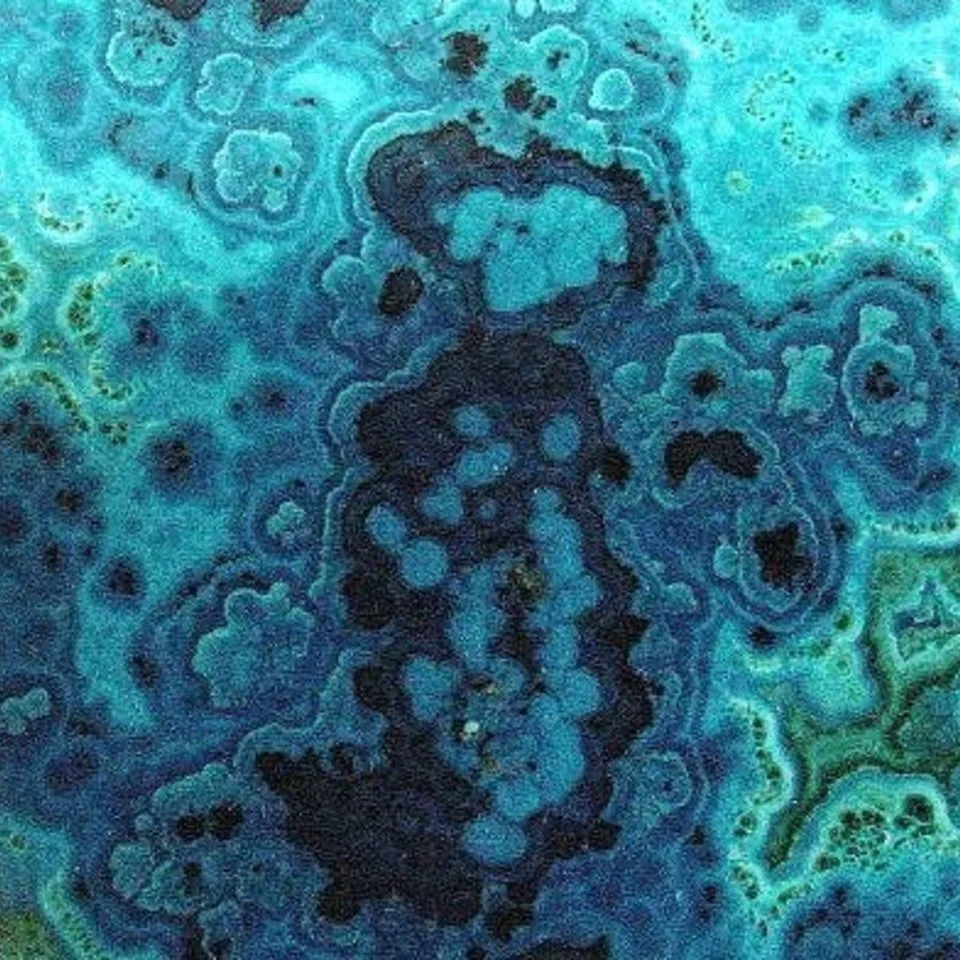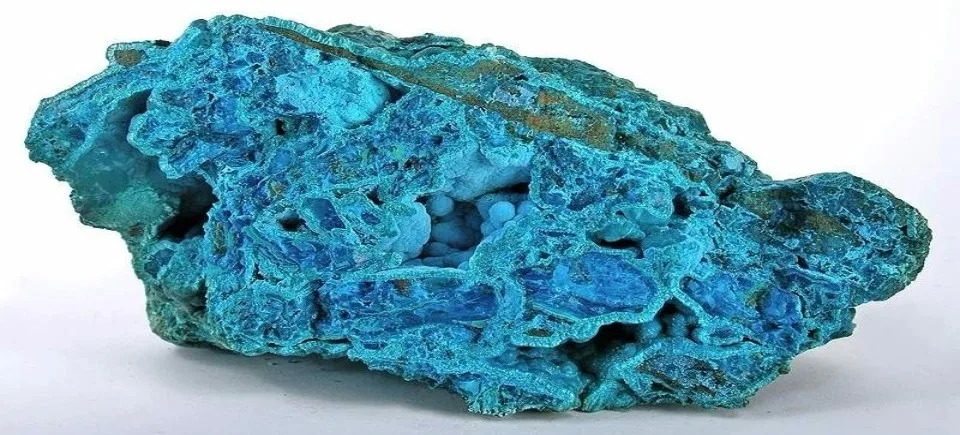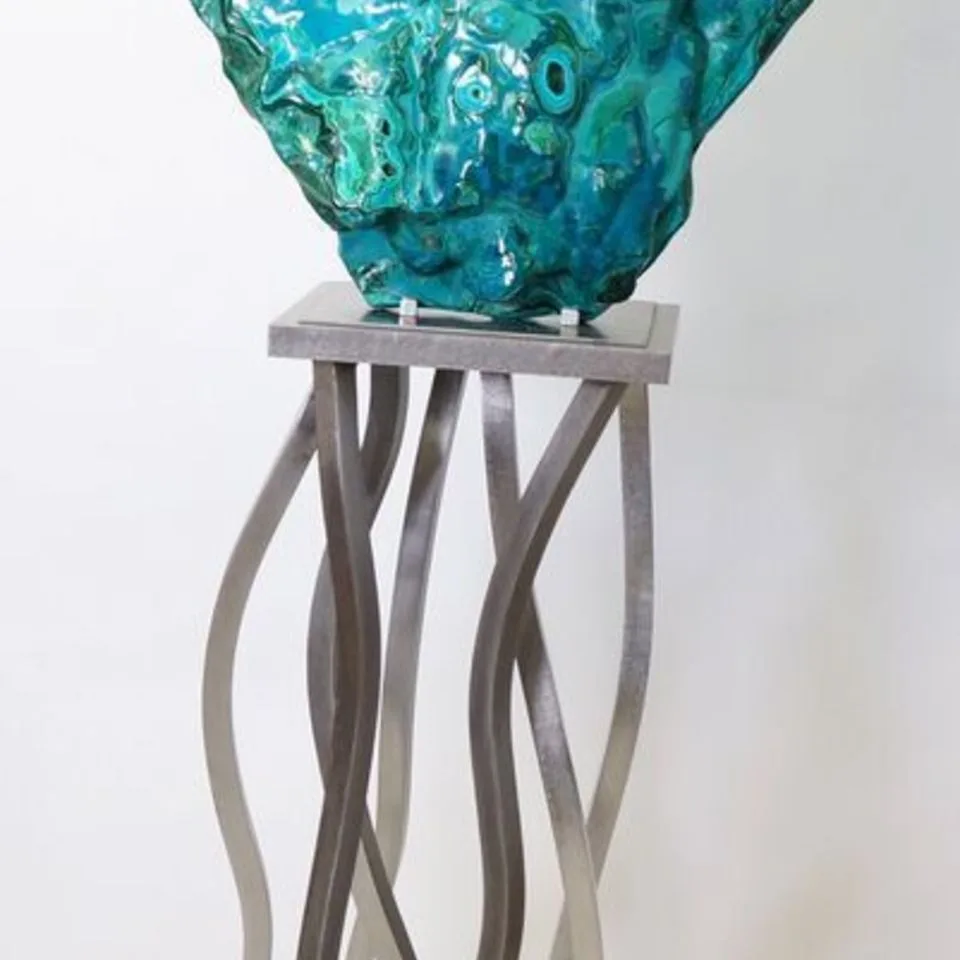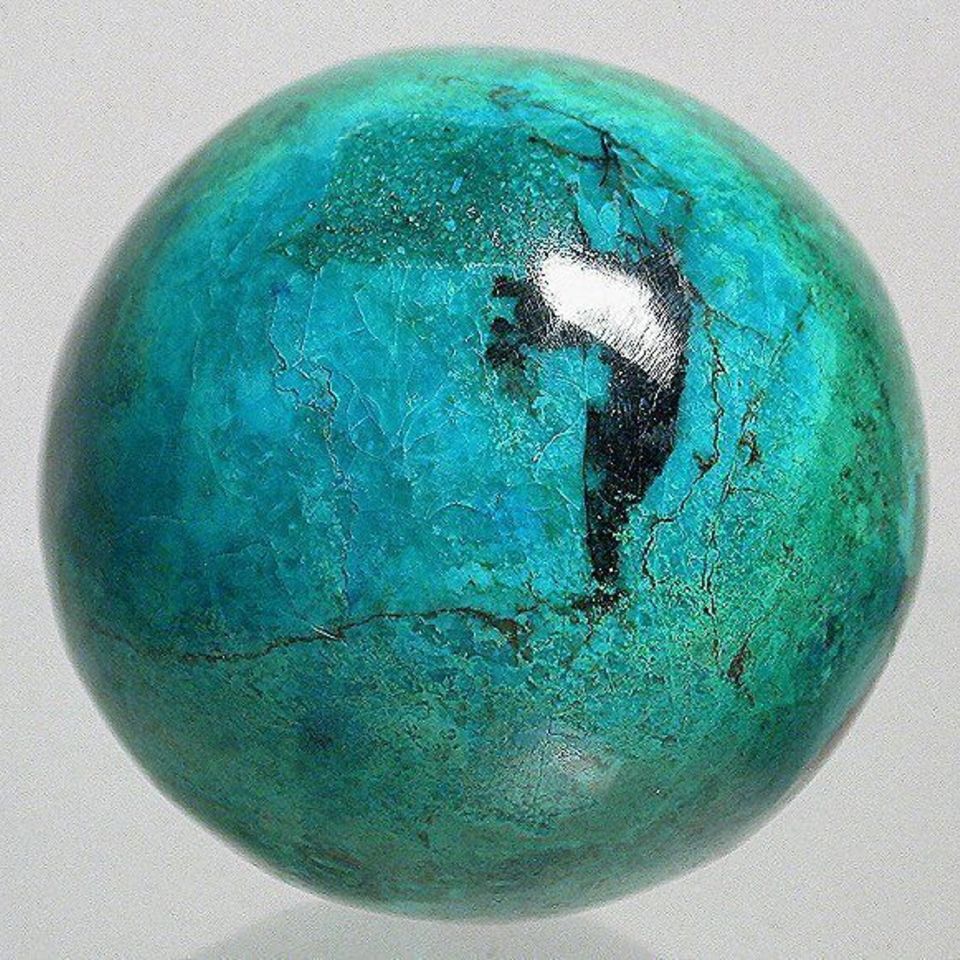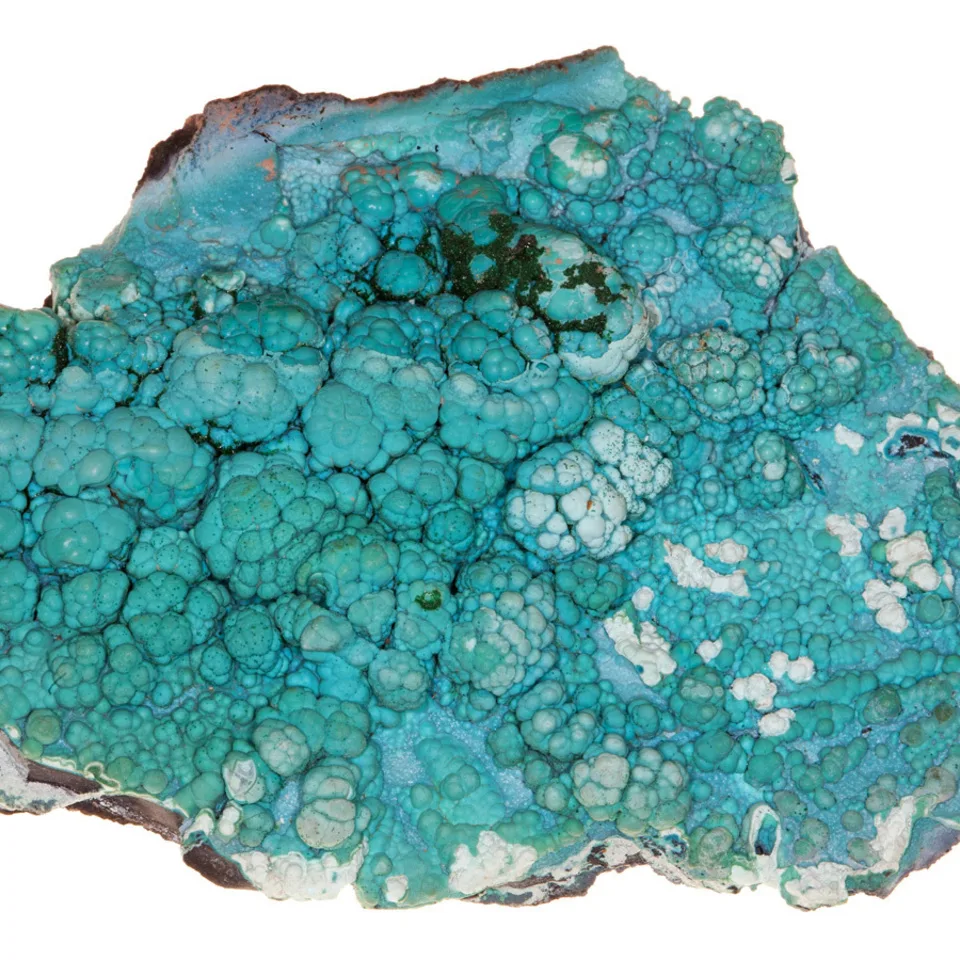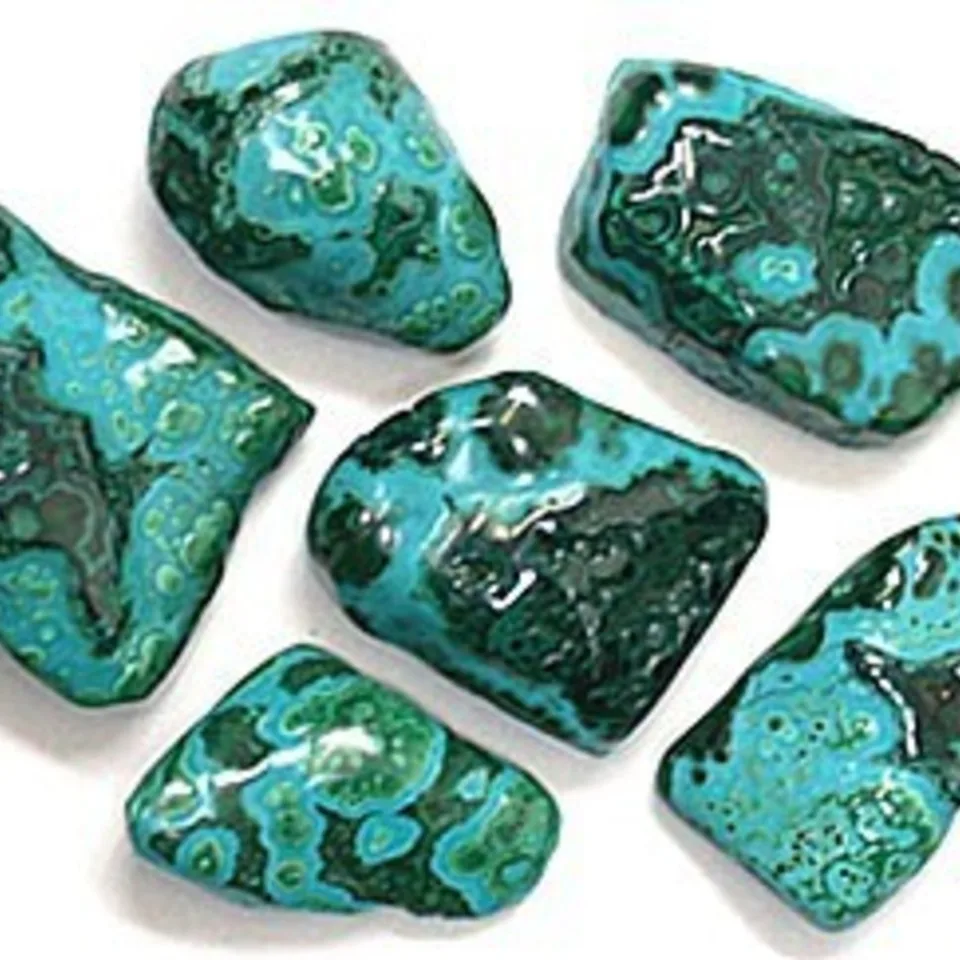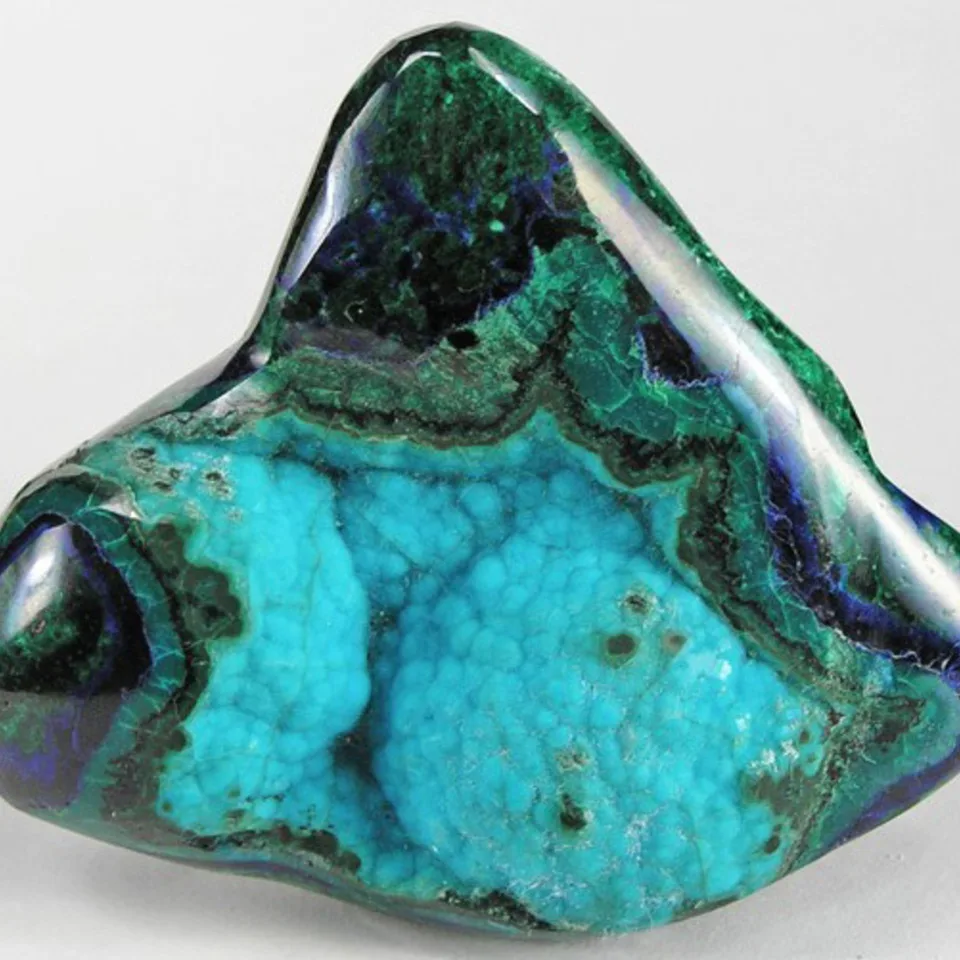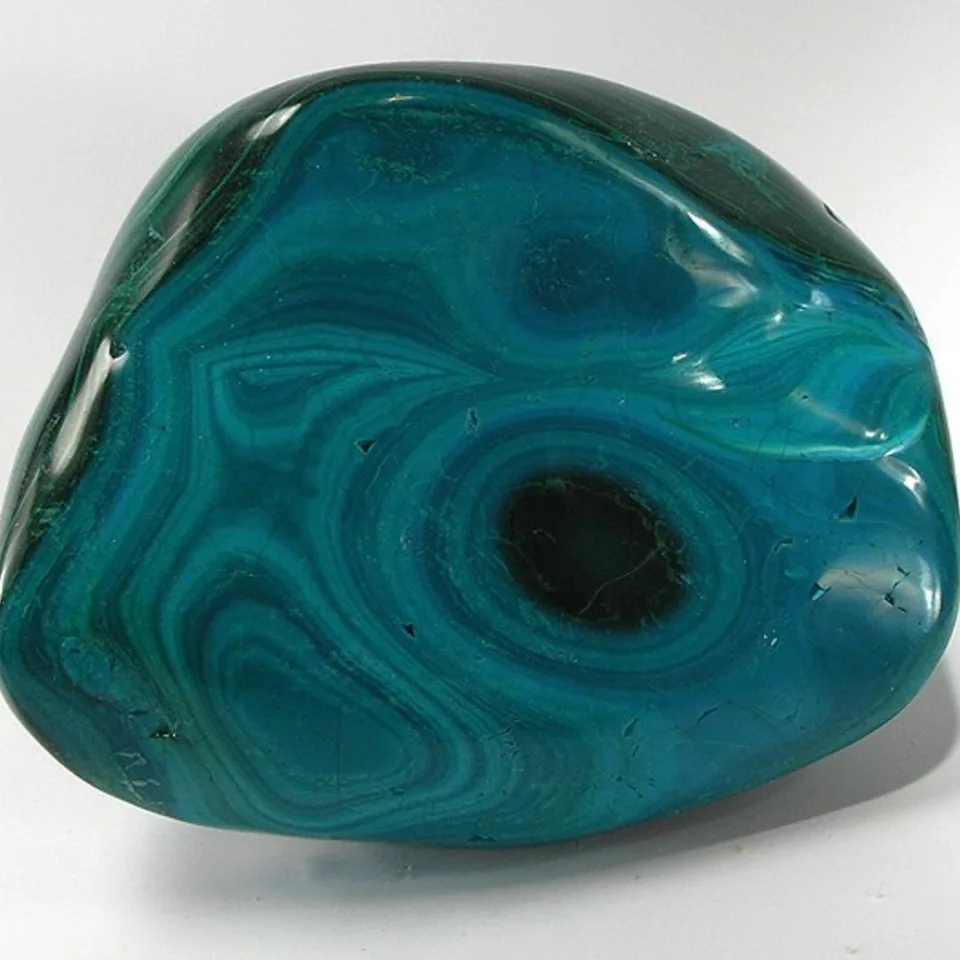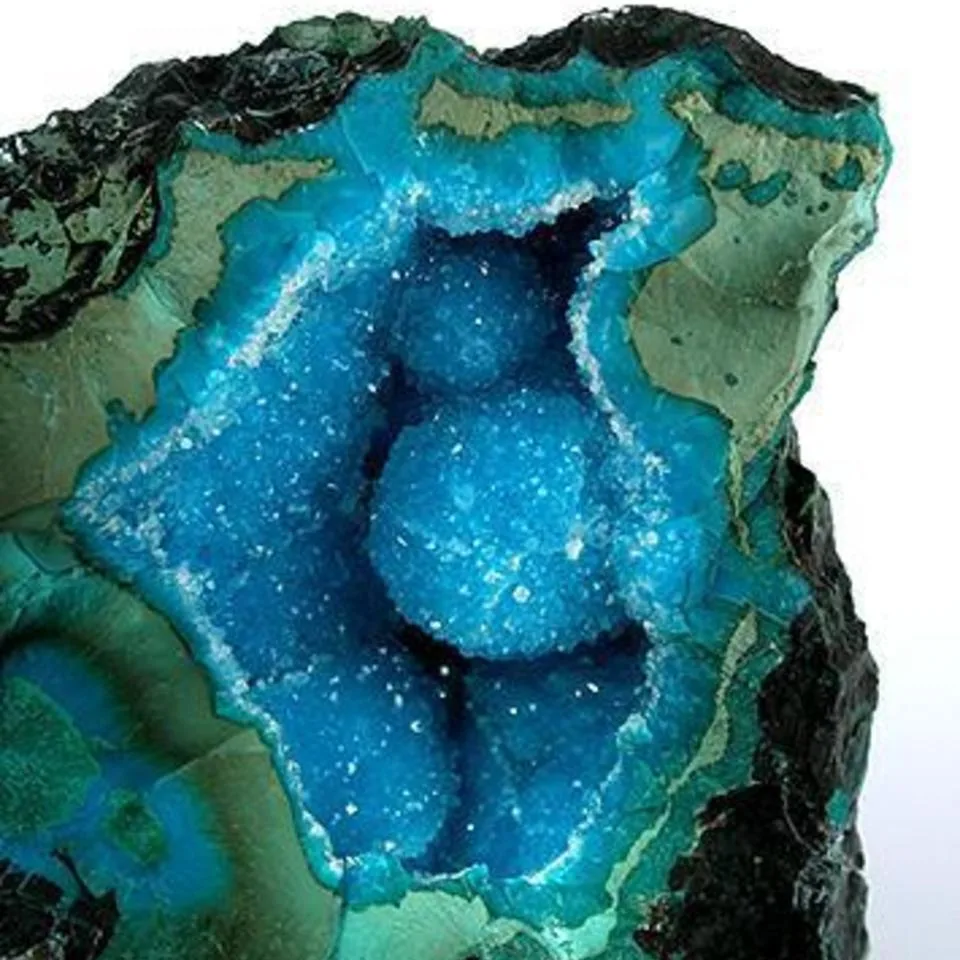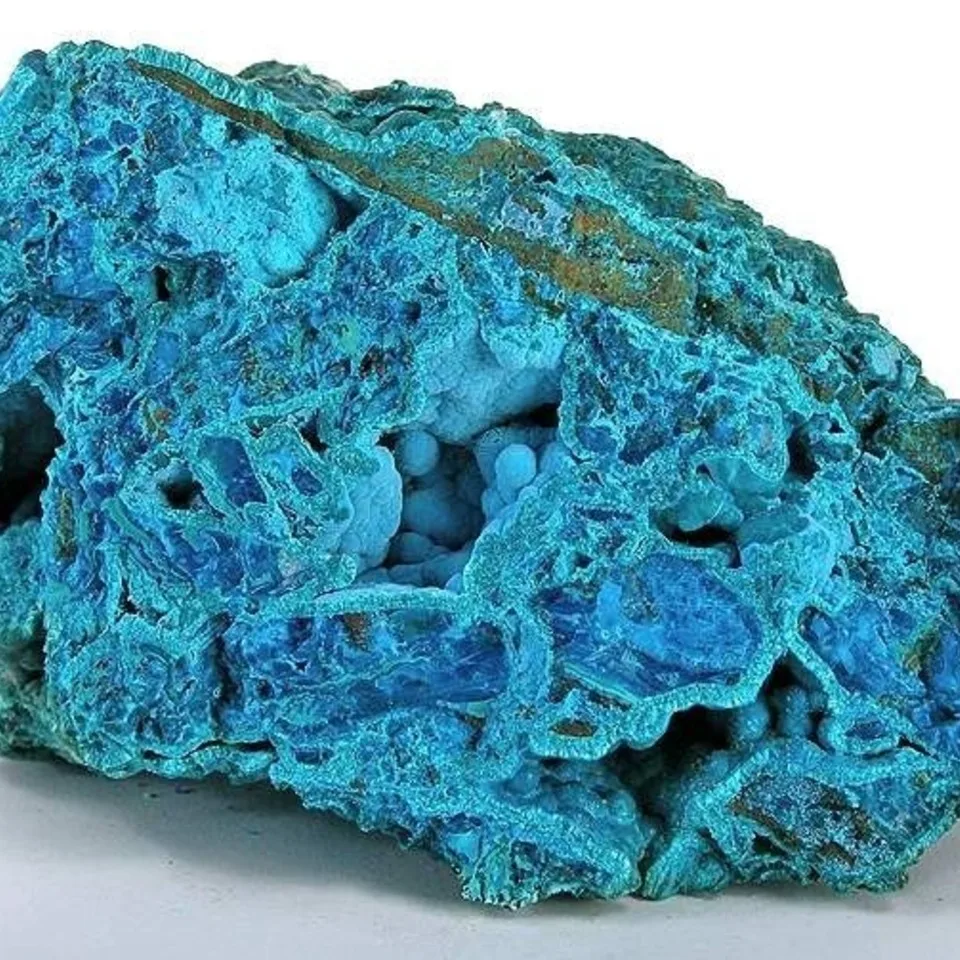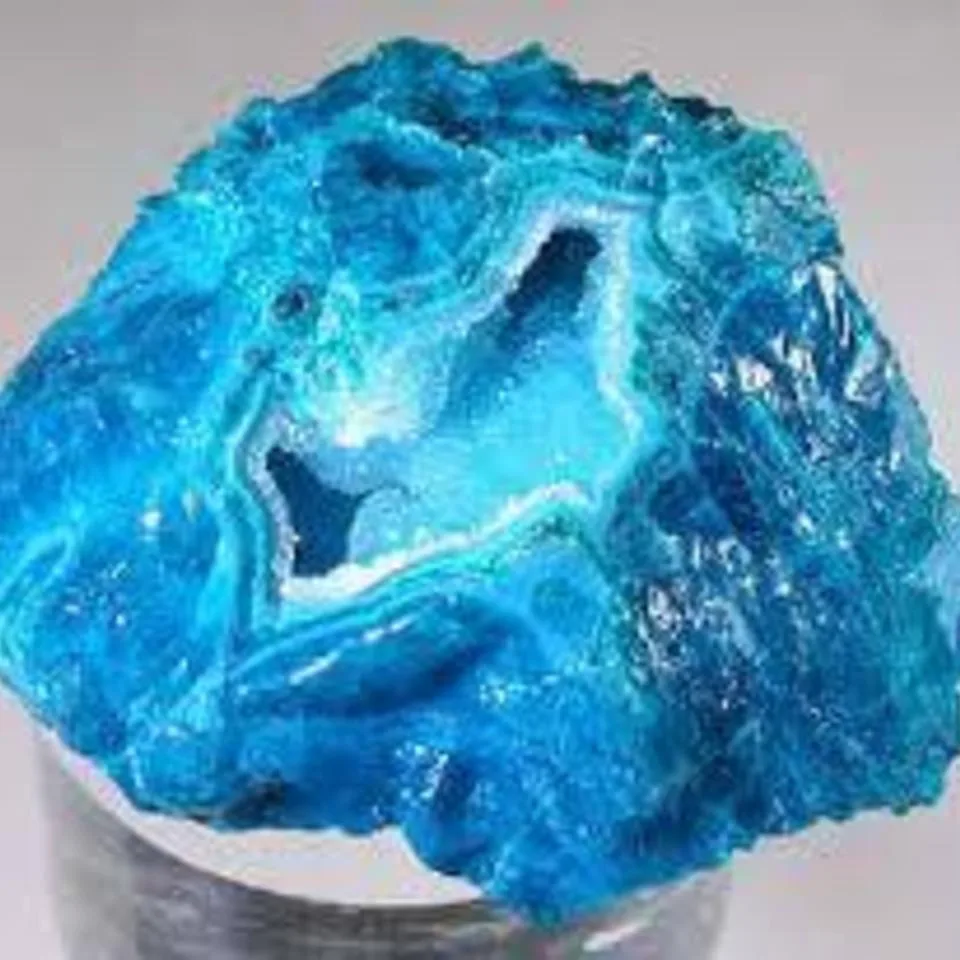Chrysocolla
Chrysocolla is a hydrated copper phyllosilicate mineral with formula: Cu2-xAlx(H2-xSi2O5)(OH)4·nH2O (x<1) or (Cu,Al)2H2Si2O5(OH)4·nH2O. The structure of the mineral has been questioned, as spectrographic studies suggest material identified as chrysocolla may be a mixture of the copper hydroxide spertiniite and chalcedony.
Chrysocolla has a cyan (blue-green) color and is a minor ore of copper, having a hardness of 2.5 to 3.5.
It is of secondary origin and forms in the oxidation zones of copper ore bodies. Associated minerals are quartz, limonite, azurite, malachite, cuprite, and other secondary copper minerals.
It is typically found as botryoidal or rounded masses and crusts, or vein fillings. Because of its light color, it is sometimes confused with turquoise.
Notable occurrences include Bacan Island Indonesia, Israel, Democratic Republic of Congo, Chile, Cornwall in England, and Arizona, Utah, Idaho, New Mexico, Michigan, and Pennsylvania in the United States.
